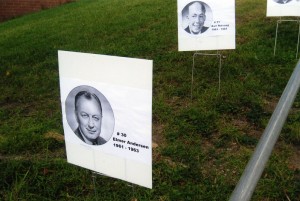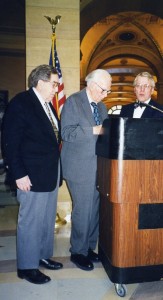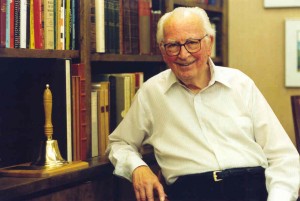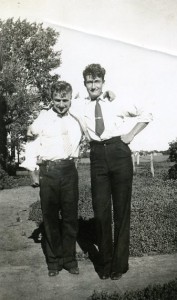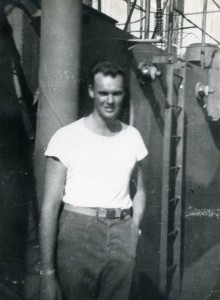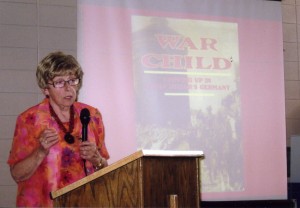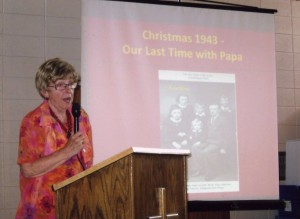#99 – Dick Bernard: "Capitalism: a Love Story"
(As you see this film, I’d like your comments to add, here.)
October 8, 2009: We saw “Capitalism: A Love Story”, this afternoon. It is well worth the time, and it’s messages will be conveyed in a later post. Even if you think that Capitalism is all there is, this film will cause you to wonder….
October 3, 2009: We were planning to go to Michael Moore’s latest film, “Capitalism: a Love Story“, today, but scheduling problems (even retired people have scheduling problems!) interfered.
So, we don’t have bragging rights to having seen the film on its first day of release, or even the second. The people who watched the film in over 1,000 theaters across the country can see it first. There’ll be plenty of time. Maybe early next week….
I’m a creature of Capitalism. Everyone of us in the U.S. are. Even those who loathe Capitalism and live in the U.S. are in Capitalism’s clutches. It surrounds us; it’s what we grew up with; it’s likely what we’ll die with, perhaps not a normal death.
(As I was writing the previous paragraph, an e-mail came in from Michael Moore’s mailing list, captioned “A Great Opening Night – – Do Not Put Off Seeing “Capitalism: A Love Story“. Michael Moore’s take at #mce_temp_url#)
Capitalism is and has always been great for the serious Capitalists, the people who make the financial killing from business as usual.
What has always been a source of curiosity for me is why the foot-soldiers in behalf of Capitalism are ultimately its intended victims: the middle class types (like me) who are exhorted to spend what they don’t have on things that they don’t need to put cash in the hands of the people who will lay them off on a moments notice to help prop up a sagging profit and loss statement.
There are many ways that this nefarious goal is accomplished: fear and loathing is an obvious one. People, at Capitalism’s encouragement, rail on against the evils of “socialism” without even knowing what it is, except as defined by the Capitalist. (We are a surprisingly “socialist” nation as it is…and we value the many socialist elements of our daily life. Yet we’re supposed to despise socialism…and almost by rote, we do.)
Most working people are in effect “chained” to a corporate work station. They are free to leave, yes, but terrified to do so, especially at this down time in the economy. Capitalism generally abhors things like labor unions, and convinces the people who might benefit by labor unions to rail against them.
Or it can be seen at really great events, like Sunday’s Twin Cities Marathon, where the corporate face is very, very positive, and tens of thousands of people participate, and watch, an outstanding event largely run by volunteers (and, of course, the runners are “volunteers” as well.) In the end analysis, though, it is the corporate sponsors, and the winners in the competition, who get the payoff. Everyone else simply contributes to the corporate greater good.
The stories go on and on.
But, yes, we are all part of Capitalism.
In the end, I think that Capitalism will succeed only in killing itself*, in a final, slow but certain, act of self-immolation. It won’t take a movie like 2012 to do us in. We literally can’t survive living in as unbalanced a way as we currently continue to live. It’s only a matter of time. The only unknown is how much time….
By the time the Capitalists figure this out it will be too late.
Watch Michael Moore’s film, get in a lather (including against him, if you like – but the film is highly rated), and go to work for deep change. You won’t get rid of Capitalism, but you can help get it reformed.
* – an older story: a friend of mine, a history buff, recalled reading an apparently true account of an old-time Capitalist venture that went severely awry. Seems a group of European businessmen, in business to make money, saw an opportunity to make a bundle by selling armaments to a neighboring country. They struck a deal, made their pile…and their country was promptly overrun by their newly well armed enemy.
I’d name the countries, but won’t. Most any self-respecting Capitalist would do the same stupid thing if opportunity knocked….
Update October 6, 2009: We’ll likely go to the film tomorrow. In the interim, I’ll simply add some comments that have come to mind since my initial scribblings, above.
In the U.S. we’re immersed in Capitalism. It’s ubiquitous, impossible to avoid. Sunday I was over at the Twin Cities Marathon – first at the starting line at the Metrodome; then at the Finish Line (no, not as a runner!).
Everything about the marathon was a commercial event, from major sponsors, frequently named, company names on all products dispensed, probable tax write-offs for their “contributions” to the community. Such events are marketing bonanzas for the corporate world.
But when I think of Capitalists, as a group, I mostly think of the really fat cats that make the really, really big bucks off the rest of the population. These folks used to be called by terms like “Robber Baron”, “Captain of Industry” and the like. In the present day you can see them in local, regional, national and international folks who are extremely wealthy (or appear to be so, till they’re busted for fraud, as has happened to some big operators in my area recently.)
These truly “rich” folks, as defined by almost anyone, are today’s Capitalists. They are only the most recent in a long, long line of people whose god is money, and who exercise power against all the rest of us.
Most of them are probably “good” people. But if it comes to accumulating power and money (synonymous terms, in my opinion), they can be pretty ruthless.

